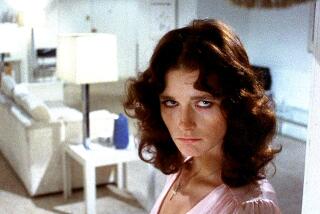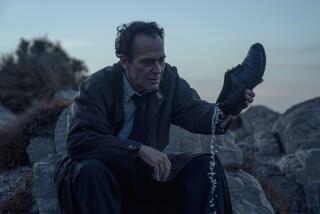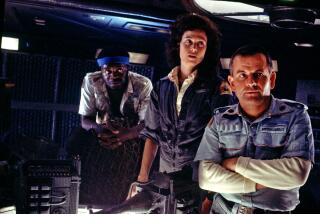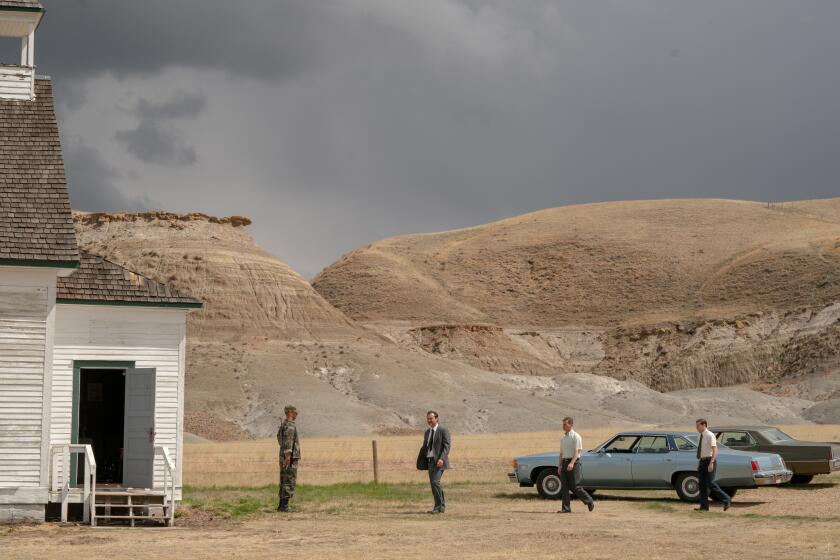Perspective: Chris Marker’s ‘La Jetee’ is timeless sci-fi
What’s the most influential sci-fi or speculative-fiction movie of the last half-century?
Stanley Kubrick’s “2001: A Space Odyssey”? Ridley Scott’s “Blade Runner”? James Cameron’s”The Terminator”? A compelling case could be made for any of those landmark films.
But a strong argument also could be mustered for an unforgettable 29-minute black-and-white French movie that consists almost entirely of still photographs shot with a Pentax camera. Although today it’s shown mostly in college film courses and museum screenings, its influence flickers like a ghost in any number of better-known Hollywood movies, including “The Terminator,” Terry Gilliam’s “12 Monkeys,” the “Matrix” trilogy and”Total Recall” (the original 1990 version, that is, not this summer’s utterly unnecessary remake).
The film, of course, is “La Jetée” (The Jetty), by Chris Marker, the French director born Christian François Bouche-Villeneuve, who died at his Paris home on July 29, his 91st birthday.
No doubt that ironic coincidence of ending your life on the same calendar day you began it would’ve brought a wry smile to Marker’s lips. Throughout his long, restless career, Marker was constantly exploring ideas about time and memory, both individual and collective. He was fascinated by the paradoxes and the inexorable grip of time and by the way the real and imagined past shapes human destiny, looping us backward and forward like a film reel. He thought of cinema as an art form fundamentally concerned with time and motion and exploited those properties to brilliant effect.
“La Jetée” (1962) is the most succinct and artfully rendered encapsulation of Marker’s obsessions. Recounted in an omniscient, affectless male voice-over, it’s the story of a man who is haunted by a childhood memory of an event he witnessed at the observation jetty at Paris’ Orly airport.
He vaguely remembers a woman’s face and a man falling; only later does he realize that he was watching this man die. Soon after, we learn, Paris was destroyed in a nuclear war. The survivors were driven underground, where some of them (including the man, played by Davos Hanich) later were used in drug-triggered time-traveling experiments aimed at altering humanity’s appalling fate.
Only at the film’s end does the man realize his mission is complete and he has been sent back in time to be killed. The image that has haunted him since childhood is the sight of his own death.
“La Jetée” would be memorable if only for its stun-gun emotional impact and future-shock visions. Pauline Kael, not easily impressed, called it “very possibly the greatest science-fiction movie yet made,” and it has spawned many imitators. “12 Monkeys,” with Bruce Willis cast as a dream-haunted man trying to avert a future apocalyptic plague, is the most direct homage. Cinematic progeny also include “The Terminator,” in which a human guerrilla fighter travels back in time to thwart a robot uprising, guided by a mysterious photo of a woman.
But what has made “La Jetée” the subject of countless film-crit doctorates is Marker’s self-conscious understanding of how photography and cinema themselves act as a sort of embalming fluid for memory. Still photographs and movies — which of course are nothing more than sequences of still photographs — are records of the past. But cinema tricks the eye and mind into thinking we are watching events unfolding in an eternal here-and-now.
As the film scholar Catherine Lupton has observed, that illusion is mimicked by the fate of the protagonist of “La Jetée,” who despite his apparent fluidity of movement ultimately fails to escape time. “La Jetée” itself pays tribute in several sequences to Alfred Hitchcock’s”Vertigo,” another film about a man who tries to re-stage his past, only to tragically discover he is fate’s puppet.
If he’d never made another film, Marker would be remembered for “La Jetée.” But in fact he had a remarkable career in which he connected themes of time and memory to complex historical subjects such as how the French public dealt with (or tried to expunge from consciousness) the legacy of its colonial occupation of Algeria (“Le Joli Mai,” 1963).
His films engaged viscerally with the realities of the Cold War world, such as his documentary “¡Cuba Sí!” about the early years of Fidel Castro’s revolution, and “Far From Vietnam” (1967), made in opposition to the United States repeating France’s military blunders in Indochina. But Marker never allowed himself to be hemmed in by mere topicality.
An elusive figure who seldom gave interviews and rarely allowed himself to be photographed, he was an inveterate wanderer through space as well as history. He made documentaries and travelogues set in locales as widely dispersed as Siberia, China, Cuba and Japan. His 1983 stream-of-consciousness masterpiece “Sans Soleil” (Sunless) is a meditative essay on memory and technology, spanning several countries and innumerable philosophies.
Marker’s heirs are not only brainy mega-action directors like Christopher Nolan and auteur-detectives like Errol Morris, but the improbably similar-named Conceptual artist Christian Marclay, whose cinematic artwork “The Clock” (2010) was acquired by the Los Angeles County Museum of Art and went on view there last year. A 24-hour-long compilation of film and TV clips that plays in a continuous loop synced to real time, “The Clock” functions as a memento mori commentary on how movie time locks the viewer into a false eternal present, while outside the movie frame life continues ticking away.
Like his countryman Marcel Proust, Marker understood that Time can never truly be regained, only momentarily borrowed. Which is perhaps one reason why his best films like “La Jetée” remain, well, timeless.
More to Read
Only good movies
Get the Indie Focus newsletter, Mark Olsen's weekly guide to the world of cinema.
You may occasionally receive promotional content from the Los Angeles Times.











